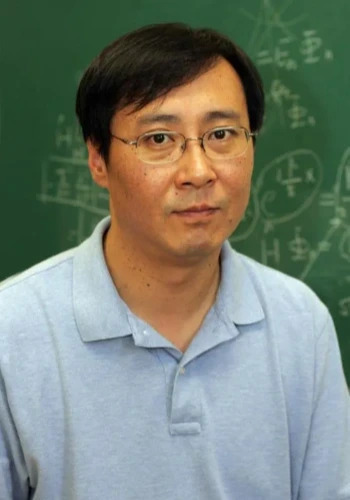Dr. Wei Li

Contact Info
Campuses and Colleges
- UW-Platteville
- College of Engineering, Mathematics, and Science
Appointments and Roles
Biography
About
Dr. Li earned his PhD in Electrical Engineering from the University of Waterloo in Canada, his Master of Science in Physics from Nankai Institute of Mathematics in Tianjin, China, and his Bachelor of Science in Physics from Jilin University in Changchun, China.
Before joining UW-Platteville, Dr. Li first worked at Apollo Photonics Inc. as a research engineer and was also an Industry Research Fellow of the National Science and Engineering Research Council (NSERC) of Canada. He was responsible for computer-aided design (CAD) simulations software development of functional components for fiber-optic communication systems and advanced material/device design including quantum wells, semiconductor laser diodes, semiconductor optical amplifiers, and other integrated devices. Then Dr. Li joined Photonami Corporation (now AVO Photonics) as a research scientist and worked on an innovative surface-emitting distributed feedback (DFB) laser for metropolitan or long-haul optical networks. Dr. Li was the co-inventor of the device.
Since joining UW-Platteville, Dr. Li has taught Engineering Physics and Physics courses. He has been invited as a technical committee member, session chair, and invited speaker at international conferences. He is the principal investigator (PI) of several research projects supported by grants from state and federal agencies including the National Science Foundation (NSF) and WiSys Technology Foundation. His current research interests include optoelectronic devices, fiber-optic communication systems, quantum electronics, quantum effects of nanoscale materials or devices, and nanophotonics.
Dr. Li has published more than fifty research papers and holds three U.S. patents. He is a senior member of the IEEE Photonics Society.
Some Papers and Inventions with Students
(all co-authors and co-inventors are Engineering Physics students)
1. W. Li, S. Belling, and H. Cihak, Computational Platform for Quantum Structure, the US Patent 11,636,371 B2, April 2023
2. H. Cihak and W. Li, “Band Variations Caused by Strain Effects for Quantum Wires with Arbitrary Orientations,” IEEE. Trans. Electron. Device, Vol. 67-1, pp. 270-276, 2020
3. W. Li and T. M. Sabel, “Reinvestigation of quantum dot symmetry: the symmetric group of the 8-band kp theory Hamiltonian,” J. Nanoparticle Research, Vol. 21, pp. 16, 2019
4. W. Li and S. Belling, “Symmetric Eigen-Wavefunctions of Quantum Dot Bound States Resulting from Geometric Confinement,” IEEE International Conference on Electro Information Technology, pp266- 270, May, Rochester, MI, 2018.
5. S. Belling, H. Cihak, and W. Li, “Finite element analysis of strain effects on symmetry reduction of semiconductor quantum dot,” Superlattice Microst, Vol. 120, pp. 22-30, 2018
6. W. Li and S. Belling, “Symmetric analysis, categorization, and optical spectrum of ideal pyramid quantum dots,” J. Phys. D- Appl. Phys, Vol. 50, pp.435102, 2017
7. W. Li, “Resonant tunneling condition and transmission periodic characteristics for a metal barrier in the Fabry–Perot cavity,” Mater. Res. Express, Vol. 3, pp. 126201, 2016.
8. J. Stolle, C. Baum, R. Amann, R. Haman, T. Call, and W. Li, “Coherent electron transparent tunneling through a single barrier within a Fabry-Perot cavity,” Superlattice Microst, Vol. 95, pp. 140-148, 2016.
9. W. Li and A. Schulz, “Computer Simulation Tool on Multi-Section DFB Laser Spectrum” University of Wisconsin System Invention Disclosure, Form number T120036US01, 2013.
10. W. Li, “Generalized free wave transfer matrix method for solving the Schrödinger equation with an arbitrary potential profile,” IEEE. J. Quantum. Electron., Vol. 46, 970-975,2010